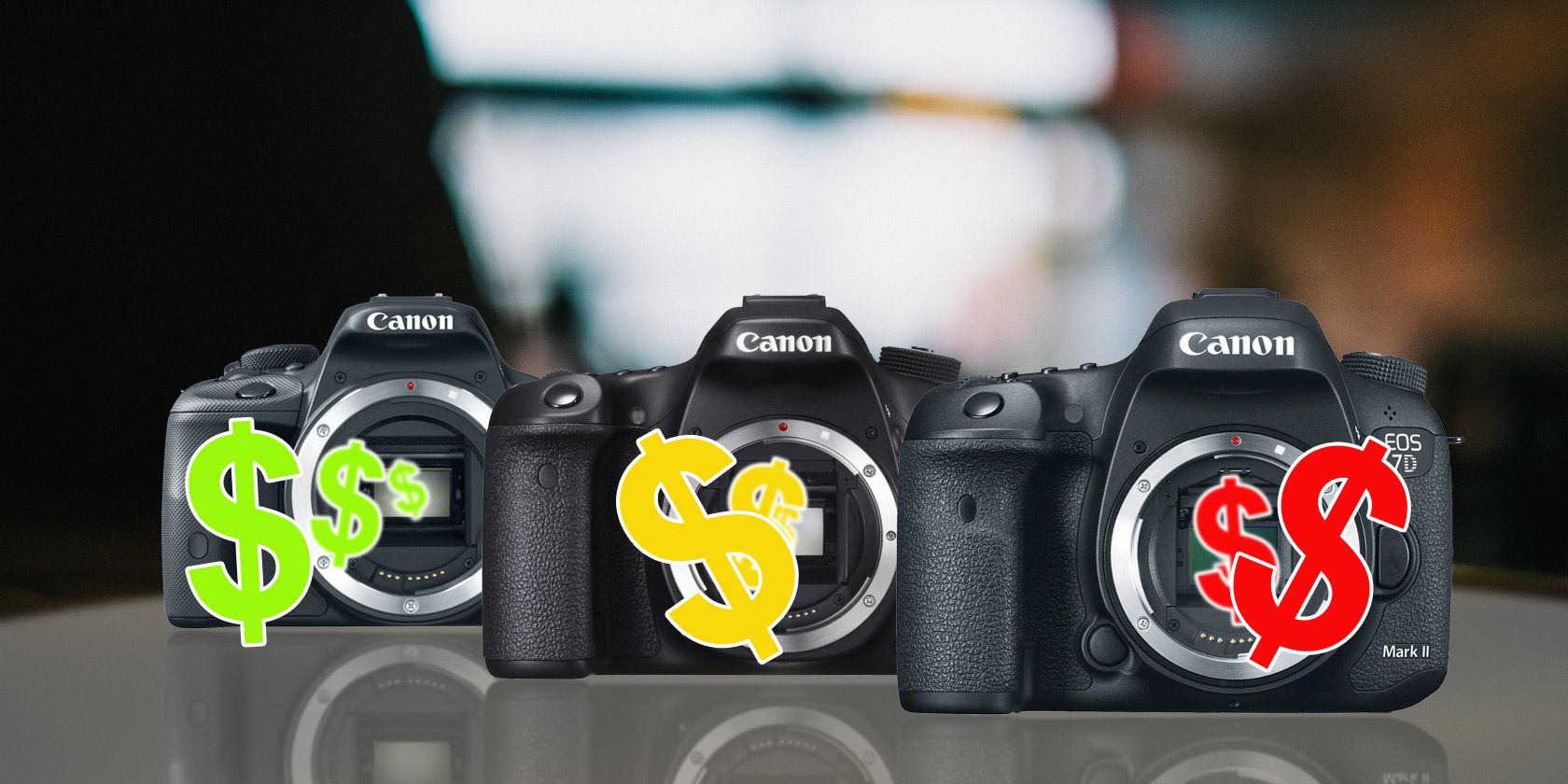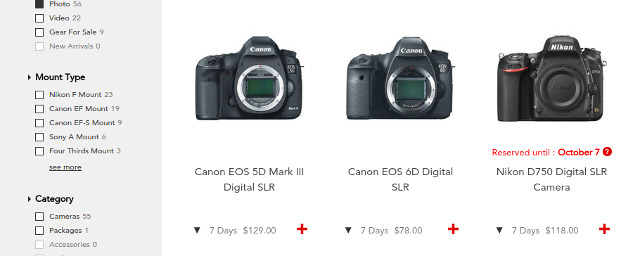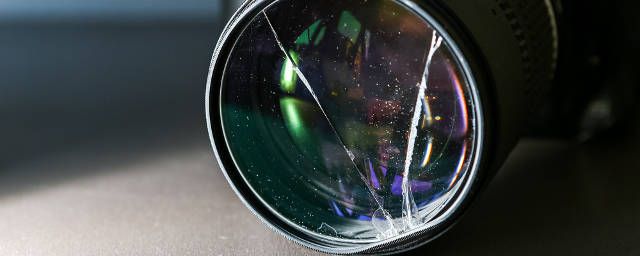Photography is an expensive hobby. Even if you stick to the most budget gear you can find, you're looking at a few hundred dollars just to get started -- and when you start graduating to the real gear, hundreds quickly become thousands.
That's why it's crucial to know how to save as much money as you can on every purchase that you make. Being a wasteful photographer can add up to thousands of lost dollars in the blink of an eye.
We've covered important tips to know before you buy your next DSLR in the past, but for those of you who are tight on cash and prefer not to throw money down the drain, here are some helpful tips for making photography a more financially-manageable activity.
1. Buy For Long-Term Value
The most important thing to know about photography gear is that it lasts a long time -- especially when we're talking about camera bodies and camera lenses. Old features rarely become obsolete and new features are slow to develop, so whatever you end up buying can serve you well for years at a time.
The most economical approach to buying a DSLR is to look at long-term value rather than short-term savings. Camera gear is a long-term investment, so it only makes sense to look at long-term costs.
What does this mean for you? It means that you should only ever look at buying two classes of DSLRs: the entry-level DSLR and the prosumer-level DSLR.
During the newbie phase, an entry-level DSLR is more than enough for learning the ropes. It'll be years before you master it, and there's very little value in a middle-tier DSLR over an entry-level one in terms of features.
Once you've mastered the entry-level DSLR, you're skilled enough to handle the advanced complexity of a prosumer-level DSLR. At this point, the prosumer-level DSLR offers more value than a middle-tier DSLR and will last you much longer as there isn't much room to upgrade beyond a prosumer-level DSLR.
Let's use an example progression to illustrate numbers: the Canon Rebel SL1 (entry-level), the Canon 70D (middle-tier), and the Canon 7D Mark II (prosumer-level). Note: These are all crop-sensor cameras. Upgrading from crop-sensor to full-frame is one exception to this rule but is a discussion for another time.
As you can see above, a newbie that starts with the Rebel SL1, spends three years mastering everything the camera offers, then upgrades to the 7D Mark II would spend $399 + $1499 = $1898.
Another newbie who starts with the Rebel SL1, spends two years in study, upgrades to the 70D, spends another year in study, then upgrades to the 7D Mark II would spend $399 + $999 + $1499 = $2897.
After three years, both newbies have their 7D Mark II cameras but the second newbie is out an extra $999 because he spent it on a temporary upgrade rather than looking at the long term.
The alternative would be to stop at the 70D and forego the 7D Mark II, which means spending $1398 to settle for a middle-tier camera that's only slightly better than the entry-level one. The jump from 70D to 7D Mark II is way more important than the jump from the Rebel SL1 to the 70D, so it's better to skip the 70D altogether.
And then there are "kit bundles" where camera bodies are sold together with bottom-tier lenses, such as the Canon Rebel SL1 + 18-55mm + 55-250mm bundle shown above. At first it looks like a good deal, but the long-term value isn't that great.
The problem is that kit lenses face the same dilemma as middle-tier DSLRs: they are quickly replaced.
If you can find a kit bundle that costs the same as -- or even cheaper than -- just the camera body itself, consider the lenses free and go for it. Otherwise, the more financially sound option is to buy the camera body by itself and invest a bit more in a dependable lens that you will use for years to come, potentially with your prosumer-level DSLR.
2. Borrow or Rent Before Buying
Even though it's often smarter to start with an entry-level DSLR and jump to a prosumer-level DSLR when you're ready, the hard part is knowing which prosumer-level DSLR to buy. They're so expensive that there's always the risk of buying the wrong one and regretting it afterwards.
Free returns might save you if you bought new, but not if you bought used (which we'll discuss further down). Reselling to recoup costs might work, but reselling a $2,000 camera for $1,500 is still $500 down the drain. When we're playing with gadgets this pricey, even the smallest margins can hurt.
Which is why you should always borrow or rent a DSLR before buying it.
The best place to rent a DSLR is any local camera shop, whether that shop is a small mom-and-pop store or part of a national chain. Rentals are usually priced as either per-day or per-week, and prices are usually proportional to the retail value of said item. For something like the 7D Mark II, expect to pay around $100 daily.
You can also rent camera bodies online at places like BorrowLenses and LensRentals. Rates are usually better online but you also have to pay for shipping and handle the hassle of return shipping. For something like the 7D Mark II, expect to pay $80 for a week + $25 for shipping.
Borrowing is basically renting for free. All you need is a photographer friend who is further along in his journey than you and can provide you with whatever DSLR or lens you're thinking of purchasing.
One side benefit of renting is that it forces you to upgrade slowly. Instead of succumbing to impulse purchases, you end up slowing down and taking the time to see if you'd really benefit from a DSLR upgrade. $100 is easier to save up and it's a much smaller amount to risk than $1,500 or higher.
3. Used Is Just As Good As New
Unless you're a full-blown professional, the general rule of thumb is that you should always buy used DSLRs when possible. That article goes into detail about why new cameras aren't worth the extra cost, but here's a short rundown for your convenience:
- DSLRs have insane lifespans so there's very little risk in getting used -- as long as you properly inspect the camera body prior to purchase.
- Between a new and a used version of the same model, the savings could be anywhere from 25% to 50%.
- Most used camera defects are cosmetic, which won't impact the camera's actual performance. But internal defects should raise flags.
So unless you have a good reason -- e.g. a manufacturer is running a promotion that makes it cheaper to buy new than used -- it's always better to buy used, economically speaking.
Where to buy used DSLRs? We recommend Adorama, B&H Photo, and KEH.com if you want to buy used (or refurbished) cameras online. They're reputable and popular, so they usually have a lot of cameras in stock. Other potential goldmines include Craigslist and eBay, but they aren't as reliable.
But just remember that there are always risks when doing any kind of online shopping, so heed these tips for buying used camera gear online to best protect yourself.
4. Consider Other Brands
If you had a minute to name as many camera brands as you could off the top of your head, how many could you list? Most people would immediately get Canon and Nikon. A small portion might be able to recall Sony and Fuji. But for 99% of us, that's where it ends.
It's true that Canon and Nikon have a stronghold on the digital camera market, but their grip has loosened over the past few years. Names like Sony and Pentax are just a few that have increased in recognition.
If you're thinking of buying a DSLR this year, consider going with another brand. Buying less mainstream brands have less popular appeal than giants like Canon and Nikon, and they might have smaller communities surrounding them, but the upside is that they're usually cheaper without any sacrifice in quality. In fact, some are actually better than Canon and Nikon.
Let's compare entry-level DSLRs from Canon and Nikon with some competitors.
Right now, the Canon Rebel T5i and the Nikon D3300 are two of the most often recommended DSLRs for beginners. These two are $650 and $500, respectively. Not too bad for a camera, but maybe a little pricey for someone new to the hobby.
In comparison, the Pentax K-50 and the Sony A3000 aren't as frequently recommended, but they're excellent value for the price. These two are $370 and $450, respectively. At the beginner levels of photography, the differences in features may as well be negligible.
Note: The Sony A3000 is actually a mirrorless camera, which is technically different from a DSLR. In function, however, the two are similar enough that we can gloss over the disparity here.
5. Get Your Camera Gear Insured
One thing that a lot of photographers overlook -- especially beginners and hobbyists -- is the fact that DSLRs are expensive to replace. We all know this, but few of us take the proper steps towards protecting these pricey investments.
I'm talking about insurance.
The next time you're walking through the park, think about how easy it would be for someone to run up and snatch your camera bag while you're peering through the viewfinder at a robin in a tree. That bag could hold thousands of dollars worth of gear, and it can be stolen in a snap.
Photography can be a lucrative career so no professional should go without insurance, but even amateurs should consider it. In the United States, most renters insurance and homeowners insurance policies will cover camera gear for amateurs, usually with a deductible of about $500.
The actual details of the policy will depend on the company you enroll with, but the general idea is that camera gear is expensive and you don't want to buy it a second time. The more gear you have, the more cost-effective it is to insure it.
Professional photographers will need to get insurance through professional organizations. The cost is greater, but these organizations will reimburse way more than a renters insurance or homeowners insurance policy would.
In some cases, insurance may even be required for legal photography reasons.
Saving Money on DSLRs Isn't Hard
As long as you follow the money-saving tips above, you'll find that you have more money in your pockets for other goodies -- like lenses, accessories, and peripherals. It isn't hard to do. It just requires a bit of patience and discipline.
But in the end, it's worth it to save a few hundred or thousand dollars, isn't it?
What other tips do you know that can help save money when buying a DSLR? We'd love to hear from you. Share with us in the comments below!
Image Credits: Broken DSLR Camera by A. Aleksandravicius via Shutterstock



